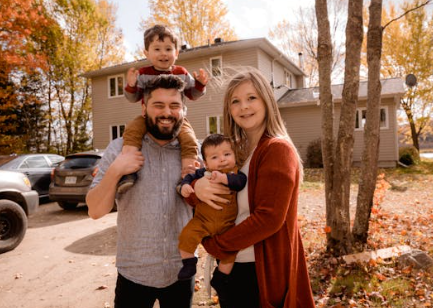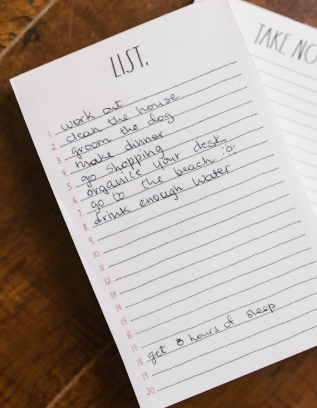
For decades, the idea of “having it all” has been dangled like a carrot in front of modern professionals—especially women. The perfect job, the happy marriage, the well-adjusted children, the effortlessly tidy home, a thriving social life, and the kind of glowing self-care routine that suggests you somehow found a 25th hour in the day. It’s a compelling fantasy, wrapped in glossy magazine covers, Instagram captions, and polished TED Talks. But behind the filtered veneer, many people are quietly exhausted, quietly questioning: What does “having it all” even mean?
The truth is, it doesn’t mean the same thing for everyone. And perhaps more importantly, it never did.

A Phrase Built on Shifting Sands
The phrase “having it all” first gained traction in the late 20th century, largely in conversations about gender roles and professional ambition. In the 1980s, it was a rallying cry—an assertion that women could be both powerful in the boardroom and nurturing at home. But as society began to embrace more fluid definitions of success, the phrase started to buckle under the weight of its own expectations.
What we rarely questioned back then—but are beginning to interrogate now—is whether this phrase set anyone up to succeed. Or whether it set us up to feel like failures, constantly measuring our lives against a template that was never meant to fit all sizes.
The Cost of Aspiration
For many, chasing this ideal doesn’t lead to fulfillment; it leads to burnout. We live in a culture that praises overachievement and multitasking, where rest is often framed as laziness and ambition is mistaken for a moral virtue. We scroll through curated posts of someone else’s morning yoga, 12-hour workday, and gourmet dinner and feel like we’re somehow falling short if we didn’t check all those boxes ourselves.
But behind the scenes, many of those lives are propped up by unseen support systems—nannies, assistants, inherited wealth, or simply the luck of good health and timing. It’s not that their achievements aren’t valid; it’s that we’re comparing our unedited reality to their highlight reel.
Redefining Balance
So what if, instead of striving to “have it all,” we focused on having what matters—to us? That might mean choosing a career that leaves time for family dinners, even if it doesn’t come with a corner office. It might mean pouring your energy into your creative work and accepting that your social calendar will look a little sparse. It might mean prioritizing travel, or health, or community, or stability—each in different seasons of life.
Balance isn’t a static state; it’s a dynamic one. It shifts based on our responsibilities, our energy, our dreams, and the curveballs life throws at us. Expecting balance to look the same for a single 25-year-old freelance designer and a 43-year-old single parent managing a team of 20 is like expecting them to wear the same pair of shoes comfortably. It just doesn’t work.
The Power of Saying “No”
One of the most liberating realizations in adult life is that saying no to one thing is often what makes room for something better. Not necessarily better in someone else’s eyes—but better for you. That might mean turning down a promotion to preserve your mental health. It might mean stepping back from a side hustle that’s draining you. It could even mean declining a social invite in favor of sitting quietly with a book.
These choices aren’t always easy. They often come with guilt, and occasionally judgment from others who don’t understand your priorities. But saying no is a way of drawing the lines around your life—choosing where the light gets in.
Letting Go of the Checklist
There is no universal checklist for a meaningful life. Some people thrive in structured 9-to-5 jobs; others find peace in unpredictability. Some want to raise families; others feel complete on their own. Some define success by income, others by impact, others still by how many mornings they wake up without dread in their chest.
The idea that there’s one roadmap to a successful life is not just outdated—it’s inaccurate. Life is not a standardized test. It’s a handwritten journal. And no one else’s handwriting is supposed to match yours.

Permission to Change
Perhaps the most important part of this conversation is recognizing that what balance looks like for you today might not be what it looked like five years ago—or what it will look like five years from now. Our values evolve. Our capacities expand and contract. We grow in different directions than we planned.
And that’s not failure. That’s life.
Instead of chasing a rigid ideal, we might do better to ask ourselves more fluid questions: What do I want more of right now? What do I need less of? What am I willing to let go of, and what do I need to protect?
These aren’t the kinds of questions that yield tidy answers. But they are the ones that lead us, slowly and honestly, toward lives that feel real and grounded—rather than aspirational and exhausting.
Final Thoughts
Maybe the biggest myth of “having it all” is that anyone ever did. Most people who seem like they have everything have made trade-offs you can’t see. They’ve made sacrifices, dropped balls, and redefined their values more than once.
So here’s a more radical idea: Maybe you don’t need to have it all. Maybe you just need to have enough of what makes your life feel like your own.
And maybe—just maybe—that’s more than enough.



